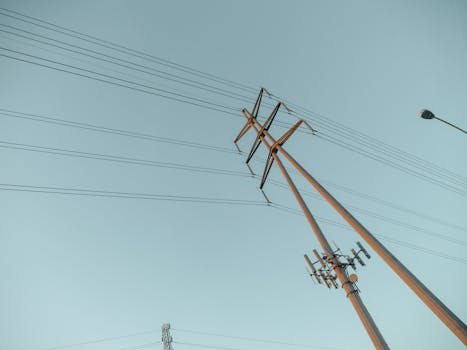“Illuminate Your Path: Essential Solar Wiring Tips for Beginners!”
Solar wiring for beginners involves understanding the essential components and connections required to set up a solar power system. This includes knowledge of solar panels, inverters, batteries, charge controllers, and the necessary wiring and safety equipment. Beginners should familiarize themselves with basic electrical concepts, such as voltage, current, and resistance, as well as the importance of proper installation techniques to ensure efficiency and safety. Additionally, understanding local regulations and codes is crucial for compliance and optimal system performance. This guide will provide a foundational overview of solar wiring, helping newcomers navigate the initial steps toward harnessing solar energy effectively.
Understanding Solar Wiring Basics
Understanding the basics of solar wiring is essential for anyone looking to harness the power of the sun for energy. As solar energy systems become increasingly popular, it is crucial to grasp the fundamental concepts that underpin their operation. At the heart of any solar energy system lies the wiring, which connects various components and ensures the efficient flow of electricity. To begin with, it is important to familiarize yourself with the key components of a solar power system, which typically includes solar panels, an inverter, a charge controller, and batteries, if applicable.
Solar panels are the most recognizable part of a solar energy system, as they capture sunlight and convert it into direct current (DC) electricity. This electricity is then sent to an inverter, which plays a pivotal role in transforming DC into alternating current (AC), the type of electricity used in most homes. Understanding the relationship between these components is vital, as the wiring must be appropriately configured to facilitate the smooth transfer of electricity from the panels to the inverter and, ultimately, to your home’s electrical system.
When it comes to solar wiring, one of the first concepts to grasp is the difference between series and parallel connections. In a series connection, solar panels are linked end-to-end, which increases the voltage while keeping the current constant. This configuration is beneficial when the system requires a higher voltage to match the inverter’s input specifications. Conversely, in a parallel connection, solar panels are connected side-by-side, which maintains the voltage while increasing the current. This setup can be advantageous in situations where shading may affect individual panels, as it allows the other panels to continue generating electricity.
Moreover, understanding wire gauge is crucial for effective solar wiring. The wire gauge determines the amount of current that can safely pass through the wire without overheating. Thicker wires, indicated by a lower gauge number, can carry more current, while thinner wires, indicated by a higher gauge number, are suitable for lower currents. It is essential to select the appropriate wire gauge based on the distance between components and the total current produced by the solar panels. Using the wrong gauge can lead to energy loss and potential safety hazards.
In addition to wire gauge, it is also important to consider the type of wire used in solar installations. Generally, solar wiring is made from either copper or aluminum, with copper being the preferred choice due to its superior conductivity and resistance to corrosion. However, aluminum can be a more cost-effective option for larger installations, provided that proper precautions are taken to prevent oxidation at the connections.
As you delve deeper into solar wiring, you will encounter various connectors and junction boxes that facilitate the interconnection of components. These connectors must be weatherproof and rated for outdoor use to ensure long-term reliability. Furthermore, understanding the importance of fuses and circuit breakers in your solar system cannot be overstated. These safety devices protect your system from overloads and short circuits, ensuring that your solar energy system operates safely and efficiently.
In conclusion, grasping the basics of solar wiring is a fundamental step for anyone interested in solar energy. By understanding the components, connections, wire gauge, and safety measures involved, you can create a reliable and efficient solar power system. As you embark on your solar journey, remember that knowledge is power, and being well-informed will empower you to make the best decisions for your energy needs.
Essential Tools for Solar Wiring
When embarking on a solar wiring project, having the right tools is crucial for ensuring both safety and efficiency. Understanding the essential tools for solar wiring not only simplifies the installation process but also enhances the overall performance of your solar energy system. To begin with, a multimeter is an indispensable tool for anyone working with solar wiring. This device allows you to measure voltage, current, and resistance, which are vital for diagnosing issues and ensuring that your system is functioning correctly. By regularly checking these parameters, you can identify potential problems before they escalate, thereby maintaining the integrity of your solar setup.
In addition to a multimeter, wire strippers are another essential tool in your solar wiring toolkit. These handy devices enable you to remove insulation from electrical wires without damaging the conductor itself. Properly stripped wires are crucial for making secure connections, which in turn minimizes the risk of electrical faults. When selecting wire strippers, it is important to choose a pair that accommodates the gauge of wire you will be using, as different solar systems may require different wire sizes.
Furthermore, a good set of crimping tools is vital for creating reliable connections between wires and terminals. Crimping tools allow you to attach connectors to the ends of wires securely, ensuring that your solar panels, charge controllers, and batteries are all properly linked. A solid connection is essential for optimal energy transfer and can significantly reduce the risk of overheating or electrical failure. When using crimping tools, it is advisable to practice on scrap wire to perfect your technique before working on your actual solar wiring project.
Moreover, a cable cutter is another important tool that should not be overlooked. This tool allows you to cut through thick cables with ease, ensuring clean and precise cuts. Clean cuts are essential for making effective connections, as jagged edges can lead to poor contact and increased resistance. When cutting cables, it is important to measure twice and cut once, as mistakes can lead to wasted materials and additional costs.
In addition to these tools, having a reliable set of screwdrivers is essential for securing components in place. A variety of screwdrivers, including flathead and Phillips, will allow you to work with different types of screws commonly found in solar installations. It is also beneficial to have a magnetic screwdriver, as this can help prevent dropped screws and make the installation process smoother.
Safety gear is another critical aspect of solar wiring. Wearing insulated gloves and safety glasses can protect you from electrical shocks and debris while working. Additionally, having a first aid kit on hand is a wise precaution, as it ensures that you are prepared for any minor accidents that may occur during the installation process.
Lastly, a good quality electrical tape is necessary for insulating connections and securing wires. This tape helps prevent short circuits and protects against moisture, which can be particularly important in outdoor installations. By using electrical tape properly, you can enhance the longevity and reliability of your solar wiring.
In conclusion, equipping yourself with the right tools is fundamental to successfully navigating the world of solar wiring. From multimeters and wire strippers to crimping tools and safety gear, each tool plays a vital role in ensuring that your solar energy system operates efficiently and safely. By investing in these essential tools, you will be well-prepared to tackle your solar wiring project with confidence and competence.
Common Mistakes in Solar Wiring
When embarking on a solar wiring project, whether for a small residential system or a larger installation, it is crucial to be aware of common mistakes that can lead to inefficiencies, safety hazards, or even system failure. One of the most frequent errors beginners make is underestimating the importance of proper wire sizing. Using wires that are too small for the current they will carry can result in overheating, voltage drops, and ultimately, damage to the system. Therefore, it is essential to consult the National Electrical Code (NEC) guidelines and use appropriate wire gauges based on the amperage and distance of the run.
Another prevalent mistake is neglecting to account for the environmental conditions that can affect wiring. For instance, exposure to sunlight, moisture, and extreme temperatures can degrade wire insulation over time. Consequently, using wires rated for outdoor use and ensuring they are UV-resistant can significantly enhance the longevity and reliability of the installation. Additionally, it is vital to secure all wiring properly to prevent movement that could lead to wear and tear, especially in areas prone to high winds or vibrations.
Moreover, many beginners overlook the importance of proper grounding. Grounding is a critical safety measure that protects both the system and the occupants of the building from electrical surges and lightning strikes. Failing to establish a solid grounding system can lead to dangerous situations, including electrical fires. Therefore, it is advisable to follow established grounding practices, such as using ground rods and ensuring all components are properly bonded.
In addition to grounding, another common oversight is the incorrect installation of connectors and junction boxes. Many newcomers may underestimate the significance of using high-quality connectors that are rated for solar applications. Poor connections can lead to increased resistance, which not only reduces system efficiency but can also create hot spots that pose fire risks. Furthermore, junction boxes must be installed in accessible locations to facilitate future maintenance and inspections, ensuring that any potential issues can be addressed promptly.
Transitioning from installation to maintenance, it is essential to recognize that neglecting regular inspections can lead to long-term problems. Many beginners may assume that once the system is installed, it requires little to no attention. However, routine checks for loose connections, corrosion, and wear can prevent minor issues from escalating into major failures. Establishing a maintenance schedule can help ensure that the system operates at peak efficiency and extends its lifespan.
Another mistake often made by beginners is failing to plan for future expansion. As energy needs change, the ability to add more panels or batteries can be crucial. Therefore, it is wise to design the wiring layout with flexibility in mind, allowing for easy upgrades without the need for a complete overhaul of the existing system. This foresight can save time and money in the long run.
Lastly, many newcomers may not fully understand the importance of adhering to local codes and regulations. Each jurisdiction may have specific requirements for solar installations, and failing to comply can result in fines or the need to redo work. Therefore, it is advisable to consult local authorities or hire a professional to ensure that all aspects of the installation meet the necessary standards.
In conclusion, avoiding these common mistakes in solar wiring can significantly enhance the performance and safety of your solar energy system. By paying attention to wire sizing, environmental factors, grounding, connections, maintenance, future planning, and local regulations, beginners can set themselves up for a successful solar installation that meets their energy needs efficiently and safely.
Safety Tips for Solar Wiring Installation
When embarking on a solar wiring installation, safety should be your foremost concern. Understanding the potential hazards associated with electrical work is crucial for both novice and experienced installers. First and foremost, it is essential to familiarize yourself with the basic principles of electricity. This knowledge will not only help you understand how solar systems operate but also enable you to identify potential risks. For instance, always remember that electricity can be dangerous, and working with it requires a cautious approach.
Before you begin any installation, ensure that you have the appropriate personal protective equipment (PPE). This includes safety goggles, insulated gloves, and non-conductive footwear. Wearing these items can significantly reduce the risk of injury from electrical shocks or accidental contact with live wires. Additionally, it is wise to work with a partner whenever possible. Having someone nearby can provide assistance in case of an emergency and can help ensure that safety protocols are followed.
Once you are equipped with the necessary safety gear, the next step is to turn off all power sources before starting your installation. This includes disconnecting the solar panels from the inverter and ensuring that the circuit breakers are in the off position. By doing so, you eliminate the risk of electric shock while working on the wiring. It is also advisable to use a multimeter to verify that there is no voltage present in the wires before proceeding. This simple step can save you from potentially life-threatening situations.
As you begin the wiring process, pay close attention to the manufacturer’s instructions and local electrical codes. Each solar system may have specific requirements that must be adhered to for safe and effective installation. Following these guidelines not only ensures compliance with regulations but also enhances the overall safety of your system. Moreover, using high-quality materials is paramount. Invest in durable, weather-resistant wiring and connectors designed for solar applications. Inferior materials can lead to overheating, short circuits, or even fires, posing significant risks to both your property and personal safety.
Furthermore, when routing wires, be mindful of their placement. Avoid running wires through areas where they could be pinched, crushed, or exposed to excessive heat. Instead, use conduit or protective tubing to shield the wires from potential damage. This precaution not only prolongs the life of your wiring but also minimizes the risk of electrical hazards. Additionally, ensure that all connections are secure and properly insulated. Loose or poorly connected wires can create arcing, which is a common cause of electrical fires.
After completing the installation, it is crucial to conduct a thorough inspection of your work. Check for any signs of wear, frayed wires, or loose connections. If you notice any issues, address them immediately before powering up the system. Once you are confident that everything is in order, you can safely reconnect the solar panels and turn on the power. However, it is advisable to monitor the system closely during its initial operation to ensure that everything functions as intended.
In conclusion, safety in solar wiring installation cannot be overstated. By adhering to proper safety protocols, using quality materials, and following manufacturer guidelines, you can significantly reduce the risks associated with electrical work. Remember that taking the time to prioritize safety not only protects you but also ensures the longevity and efficiency of your solar energy system. With careful planning and attention to detail, you can enjoy the benefits of solar energy while maintaining a safe working environment.
Q&A
1. **What is the basic purpose of solar wiring?**
Solar wiring connects solar panels to the inverter and battery systems, allowing the conversion of solar energy into usable electricity.
2. **What types of wires are commonly used in solar installations?**
Common types include PV (photovoltaic) wire, which is rated for outdoor use and high temperatures, and THHN wire, which is used for indoor applications.
3. **What is the importance of wire gauge in solar wiring?**
Wire gauge affects the amount of current that can safely pass through the wire; using the correct gauge prevents overheating and energy loss.
4. **What safety precautions should be taken when working with solar wiring?**
Always disconnect power before working on the system, use insulated tools, wear protective gear, and follow local electrical codes and regulations.
Conclusion
Solar wiring for beginners involves understanding the basic components of a solar power system, including solar panels, inverters, batteries, and charge controllers. It’s essential to learn about the different types of wiring, such as series and parallel connections, and the importance of proper gauge wire to handle the system’s voltage and current. Safety precautions, including grounding and circuit protection, are crucial to prevent hazards. Familiarity with local codes and regulations is also necessary for compliance. Overall, a solid grasp of these fundamentals will enable beginners to effectively design and install a solar power system.




